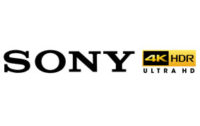
Behind the Scenes Look at ISF Calibration
You just bought a new HDTV that you’ve had your eye on for months. Now it’s all set up in your living room, and you turn it on for the first time, anxious to see that crisp, clear image that you saw on the store model.
What you don’t know is that a TV straight out of the box does not produce the optimum picture quality that you saw on display. There are some factors to explain why your view is different than you expected. Let’s take a closer look at what ISF calibration is and why you need it.
What is ISF Calibration
ISF stands for Imaging Science Foundation, an organization set up with the goal to provide individuals and corporations the opportunity for AV products to perform at the highest quality. The ISF works with TV and projector manufacturers to develop and provide tools that produce professional-grade calibration. Engineers are taught the basics of TV setup and trained to calibrate the equipment to deliver the best picture possible.
The ISF calibration procedure takes into account the lighting conditions, the layout of the room, and configuration of your TV to provide a truly personalized viewing experience. While the factory settings of your television may look acceptable to the untrained eye, ISF calibration will enhance the experience to display the perfect picture.
Calibration is necessary to ensure that content looks the same across the world. Due to changing technologies and advanced equipment, high-quality products like HDTV’s need to be calibrated backward to meet industry standards. Proper calibration means you see the content exactly as designed.
How It’s Done
After the professional arrives at your home, the calibration process will typically take approximately two hours. The first job of the engineer is to ensure that the TV is set up correctly. This includes checking that all of the cables are hooked up right, the sources are outputting the correct resolution, and that the TV is working.
The calibrator will then either use a setup disc or a test pattern generator to go through all of the TV’s settings to make sure the TV looks its best. Settings include contrast and brightness. These settings mean that the TV is as bright as it should be for your viewing area and that the best level of black is used without concealing shadow detail.
The next step is to adjust the TV’s color temperature. The goal of changing the TV’s color temperature is to get it as close as possible to the D6500 standard that is used by the TV and film industry. By reaching that goal, your screen will look as close as possible to how the creator of the content intended it to be viewed.
The manufacturer of your TV may have enabled the adjustment of actual color points, allowing each color to look more realistic. The calibrator can fine-tune these colors to maximize the calibration process. Fine-tuning these colors also depends on the equipment that the calibrator uses, so if you are interested in this service, be sure to ask if the calibrator has the capabilities to do so before your visit.
ISF Benefits
Of the many benefits to calibrating your television, the most significant benefit is getting brighter, clearer images for your optimal viewing experience. A correctly calibrated TV will be easier on the eyes. Because the calibration takes into account the lighting conditions of the room, your eyes will be able to adjust better to the screen. Calibrating can make colors look more realistic and make details more visually appealing.
Depending on the light output from the television after the calibration, the television may use less power and last longer than if it wasn’t calibrated. However, keep in mind that if the calibration requires a brighter setting, then you may not gain the benefit of reduced power.
Some manufacturers have specific modes like ISF-Day and ISF-Night. This allows you to receive the best picture no matter what time of day since the lighting in the room will vary from natural light to artificial light.
Even if your TV arrived pre-calibrated, it won’t deliver the same picture that getting it professionally calibrated would since the manufacturer cannot take into account the specific lighting of your home.
Consider these additional benefits of ISF calibration:
- -Receive the most accurate image and color
- -Clear and crisp image
- -Greater longevity from your TV
- -Deeper colors
- -Full details in dark and bright images
- -Reduced eye strain
Now that you know what ISF calibration is, how it’s done, and what the benefits are, it’s important to keep in mind when purchasing a new home theater system. Our expertly trained technicians can assist you with calibration services to ensure you are getting the optimal picture on your television. Don’t just stick with the factory settings. Most people don’t know what the capabilities of their machine are to deliver beautiful, natural pictures on the screen. You’re already investing in the television; why wouldn’t you want to invest in getting the best picture possible.











Leave a Reply